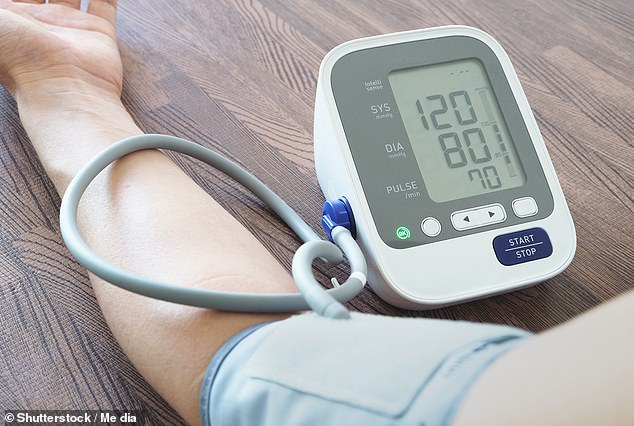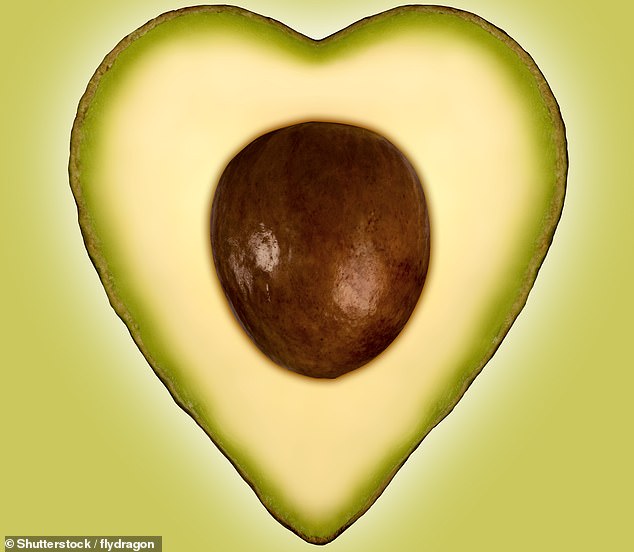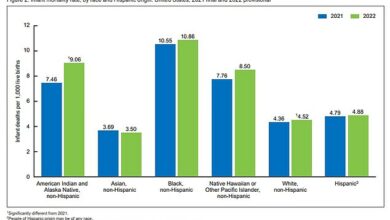These are the foods you should eat to lower your blood pressure, especially if you are menopausal





Menopausal women concerned about their blood pressure may consider increasing their intake of certain potassium-rich foods.
Why? Because they are more sensitive to the harmful effects of salt than others – and new science suggests that increasing intake of such foods (think not just avocados but also salmon and bananas) may help soften the impact of salt – and perhaps be more beneficial is then cutting back. only rely on salt when it comes to lowering blood pressure.
Salt increases blood pressure because it causes your body to retain too much fluid, and may also affect your gut bacteria.
An animal study (not confirmed in humans) found that a high-salt diet can reduce the number of ‘good’ bacteria such as Lactobacillus, which in turn reduces the production of short-chain fatty acids, molecules that help control inflammation. was reported in June in the journal Hypertension Research.

Salt increases blood pressure because it causes your body to retain too much fluid, and may also affect your gut bacteria
Without enough of these anti-inflammatory molecules, blood vessel walls can become damaged, leading to increased blood pressure.
The benefits of cutting back on salt are indisputable. A review of several previous studies, published in the BMJ in 2020, found for every half teaspoon of salt you cut from your diet, your systolic blood pressure reading (the first number, and the number most associated with the risk of heart attack and stroke) could decrease by 1.1 mmHg and the diastolic value (bottom number) could decrease by 0.3 mmHg.
To see a drop in systolic blood pressure of about 5 mmHg, you would need to eliminate about one and a half teaspoons of salt from your daily intake.
Despite such findings, we remain a nation of salt lovers.
According to the UK National Diet and Nutrition Survey 2018/2019, the average Briton eats more than 8 grams of salt per day – around 40 percent more than the recommended limit of 6 grams (just over a teaspoon) – of which 70 percent is hidden in salt. ultra-processed foods such as bread, cereal and ready-made meals instead of adding them to the table.
While cutting back on ultra-processed foods is a great way to reduce salt, it can improve your blood pressure and possibly your overall health even more by improving the balance of salt, or specifically sodium (table salt is about 40 percent sodium). and potassium in your diet.

Increasing your intake of potassium-rich foods, including avocados, salmon and bananas, can help soften the impact of salt
This sparked interest in scientific circles after a study published in January 2024 in the journal BMC Public Health found that the ratio of these two nutrients has a greater impact on blood pressure than focusing on either alone.
The study of 2,050 participants – which took into account their salt (sodium) and potassium intake – found that those with the highest potassium intake had a 56 percent lower risk of cardiovascular disease (which can result of uncontrolled high blood pressure). ).
Potassium is thought to help counteract the effect of salt by relaxing your blood vessels, flushing extra salt through your urine and controlling your body’s fluid balance, which helps lower blood pressure.
But it’s the balance between sodium and potassium that is most important for heart health.
The finding may be especially beneficial for postmenopausal women, who become more sensitive to salt, because lower estrogen levels after menopause make it harder for the body to regulate sodium, leading to more noticeable blood pressure spikes.
But it’s also relevant to many of us, as an estimated 4.2 million people don’t know they have high blood pressure, according to the Office for National Statistics. So here are my tips to improve your sodium-potassium balance.
USE POTASSIUM HERBS

Low sodium salts still contain some sodium, but with much less than regular salt they generally have a smaller impact
Regular table salt consists of about 40 percent sodium and the rest consists of chloride, trace elements and anti-caking agents to prevent clumping.
Potassium salt, also called low-sodium salt, replaces part of the sodium chloride with potassium chloride. Switching to one of these low-sodium salts can make a big difference in your heart health.
A 2021 study in the New England Journal of Medicine involving more than 20,000 people over nearly five years found that using a salt substitute reduced systolic blood pressure by 3.3 mmHg and diastolic by 0.7 mmHg.
The study also found that the risk of hyperkalemia (too much potassium) did not increase significantly, even in people with high blood pressure, making it a safe option for most people (unless you have kidney problems).
Low-sodium salts still contain some sodium, so they count toward your 6-gram daily limit. But with much less salt than regular salt, they generally have a smaller impact.
Eat a baked potato for lunch
If you are a salt lover, I recommend that you include sources of potassium in your daily diet.
Many people believe that bananas are the best source, but while one banana contains around 450 mg of potassium, there are other everyday foods that contain more than twice that much – including a cup of Swiss chard or beet greens, or even a simple baked potato.
In fact, leafy greens like kale, beans like chickpeas, dairy products, and certain types of fish – like salmon and sardines – all contain high concentrations.
We should all get enough potassium in our diets.
A 2024 study published in the journal BMC Public Health found that eating at least 3,500 mg of potassium per day is associated with a lower risk of death from all causes.
To reach that amount you would need to eat a banana, an orange, a sweet potato, a baked potato, a cup of spinach and a cup of kidney beans per day – which is feasible for most of us.
Think again about that ham sandwich
According to the latest National Diet and Nutrition Survey, white bread is responsible for the lion’s share of the UK population’s salt intake (followed by bacon and ham).
That’s not surprising when you consider that about 75 percent of sliced breads contain as much salt per slice as a packet of ready-made salted chips.
You do need to add salt to make bread; it adds flavor and also helps with fermentation. But there is a difference in salt content between different brands, with some containing as little as half a gram per 100 grams, while others contain up to three times as much – and on average around 0.4 grams per slice.
White bread tops the list because it is the most popular bread in Britain. However, a 2023 report from Action on Salt shows that wraps and wholemeal bread can still contain significant amounts of salt.
So check the labels or traffic light system (which lists various nutritional values) on the front of store-bought loaves of bread.
If you’re a fan of a ham sandwich, opt for a low-sodium bread and consider swapping the ham for low-sodium sliced chicken or turkey. And add vegetables like lettuce, tomatoes and cucumber to add potassium.
ADD MORE MUSHROOMS

Menopausal women are more sensitive to the harmful effects of salt than other people
Let’s not forget the main reason why we add salt to food: it makes it tastier.
But the good news is that in just two weeks we can retrain our taste buds to enjoy foods with less salt. Research shows that using spices and herbs can help reduce the amount of salt required without sacrificing taste.
Try roasting vegetables in mixed herbs (roasting also naturally enhances the flavour) or mixing fresh herbs into dishes.
Umami-rich ingredients like mushrooms and tomatoes also enhance the flavor (and provide potassium), while using fresh citrus juices or vinegar can add a spicy kick.
PS: Eat that salty snack in the morning
If you plan to eat salty foods, it may be better to enjoy them earlier in the day.
A 2021 review in the American Journal of Hypertension suggested that our bodies are better able to get rid of sodium earlier in the day when we are more active.
This means that eating salty foods in the morning may have less of an impact on your blood pressure than eating them in the afternoon or evening. This is because blood pressure tends to rise during the day and fall at night when you are resting. The researchers speculated that eating salt earlier gives the body more time to flush out the excess sodium, possibly preventing higher blood pressure at night.
While much of this research comes from animal studies, it may apply to humans as well.




